Experimental testing of a new integrated model of the budding yeast Start transition
- PMID: 26310445
- PMCID: PMC4710230
- DOI: 10.1091/mbc.E15-06-0358
Experimental testing of a new integrated model of the budding yeast Start transition
Abstract
The cell cycle is composed of bistable molecular switches that govern the transitions between gap phases (G1 and G2) and the phases in which DNA is replicated (S) and partitioned between daughter cells (M). Many molecular details of the budding yeast G1-S transition (Start) have been elucidated in recent years, especially with regard to its switch-like behavior due to positive feedback mechanisms. These results led us to reevaluate and expand a previous mathematical model of the yeast cell cycle. The new model incorporates Whi3 inhibition of Cln3 activity, Whi5 inhibition of SBF and MBF transcription factors, and feedback inhibition of Whi5 by G1-S cyclins. We tested the accuracy of the model by simulating various mutants not described in the literature. We then constructed these novel mutant strains and compared their observed phenotypes to the model's simulations. The experimental results reported here led to further changes of the model, which will be fully described in a later article. Our study demonstrates the advantages of combining model design, simulation, and testing in a coordinated effort to better understand a complex biological network.
© 2015 Adames et al. This article is distributed by The American Society for Cell Biology under license from the author(s). Two months after publication it is available to the public under an Attribution–Noncommercial–Share Alike 3.0 Unported Creative Commons License (http://creativecommons.org/licenses/by-nc-sa/3.0).
Figures

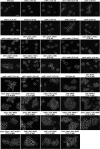

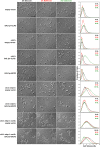
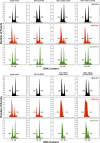
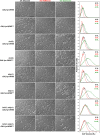
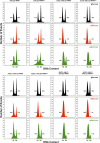


Similar articles
-
Cln3 activates G1-specific transcription via phosphorylation of the SBF bound repressor Whi5.Cell. 2004 Jun 25;117(7):887-98. doi: 10.1016/j.cell.2004.05.025. Cell. 2004. PMID: 15210110
-
G1/S Transcription Factor Copy Number Is a Growth-Dependent Determinant of Cell Cycle Commitment in Yeast.Cell Syst. 2018 May 23;6(5):539-554.e11. doi: 10.1016/j.cels.2018.04.012. Cell Syst. 2018. PMID: 29792825
-
The transcriptional network activated by Cln3 cyclin at the G1-to-S transition of the yeast cell cycle.Genome Biol. 2010;11(6):R67. doi: 10.1186/gb-2010-11-6-r67. Epub 2010 Jun 23. Genome Biol. 2010. PMID: 20573214 Free PMC article.
-
Start and the restriction point.Curr Opin Cell Biol. 2013 Dec;25(6):717-23. doi: 10.1016/j.ceb.2013.07.010. Epub 2013 Aug 2. Curr Opin Cell Biol. 2013. PMID: 23916770 Free PMC article. Review.
-
Fungal Cell Cycle: A Unicellular versus Multicellular Comparison.Microbiol Spectr. 2016 Dec;4(6). doi: 10.1128/microbiolspec.FUNK-0025-2016. Microbiol Spectr. 2016. PMID: 28087934 Review.
Cited by
-
Bayesian inference using qualitative observations of underlying continuous variables.Bioinformatics. 2020 May 1;36(10):3177-3184. doi: 10.1093/bioinformatics/btaa084. Bioinformatics. 2020. PMID: 32049328 Free PMC article.
-
The microprotein Nrs1 rewires the G1/S transcriptional machinery during nitrogen limitation in budding yeast.PLoS Biol. 2022 Mar 3;20(3):e3001548. doi: 10.1371/journal.pbio.3001548. eCollection 2022 Mar. PLoS Biol. 2022. PMID: 35239649 Free PMC article.
-
Quantifying Nucleation In Vivo Reveals the Physical Basis of Prion-like Phase Behavior.Mol Cell. 2018 Jul 5;71(1):155-168.e7. doi: 10.1016/j.molcel.2018.06.016. Mol Cell. 2018. PMID: 29979963 Free PMC article.
-
Genetic interactions derived from high-throughput phenotyping of 6589 yeast cell cycle mutants.NPJ Syst Biol Appl. 2020 May 6;6(1):11. doi: 10.1038/s41540-020-0134-z. NPJ Syst Biol Appl. 2020. PMID: 32376972 Free PMC article.
-
Advances and challenges in logical modeling of cell cycle regulation: perspective for multi-scale, integrative yeast cell models.FEMS Yeast Res. 2017 Jan;17(1):fow103. doi: 10.1093/femsyr/fow103. Epub 2016 Dec 18. FEMS Yeast Res. 2017. PMID: 27993914 Free PMC article. Review.
References
-
- Amon A, Tyers M, Futcher B, Nasmyth K. Mechanisms that help the yeast cell cycle clock tick: G2 cyclins transcriptionally activate G2 cyclins and repress G1 cyclins. Cell. 1993;74:993–1007. - PubMed
Publication types
MeSH terms
Substances
Grants and funding
LinkOut - more resources
Full Text Sources
Molecular Biology Databases
Miscellaneous

